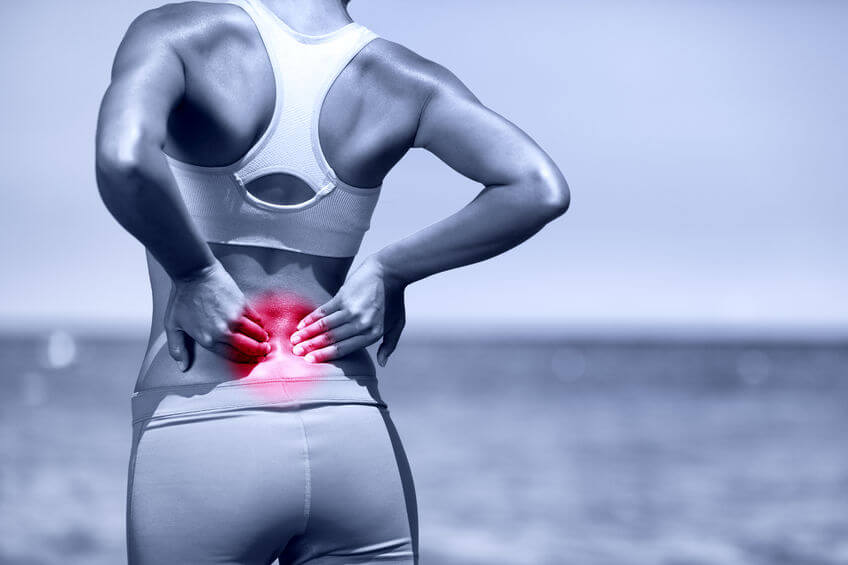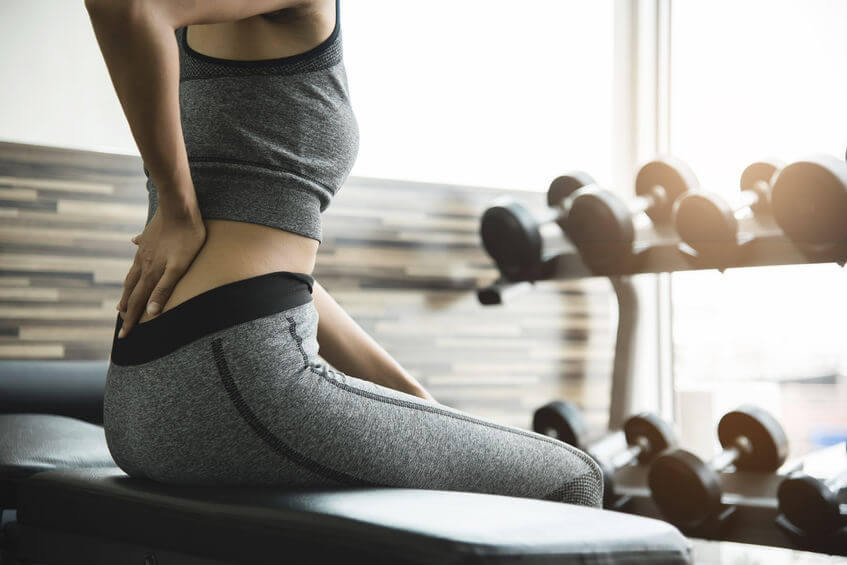8 Benefits of Inversion Tables & Why You Should Try It
Do you feel like you’ve tried everything to get rid of your lower back pain, but it still lingers?
Not only is back pain incredibly uncomfortable, but the struggle with it can be mentally draining. It can even be downright awkward when you’re the person that has to stand up in the back of a room during a class or meeting to relieve your aching muscles.
You may have tried yoga and massage and strength training, but there could be a missing piece to the puzzle. An inversion table.
Lying upside down to feel better sounds strange, yes, but the benefits can have some amazing results.
In this article, I will explain eight benefits of an inversion table and why this could be part of a natural solution to your low back pain problem.
Contents
What is an Inversion Table?
An inversion table looks a bit like a large chair that’s missing the seat, or like a small table placed on hinges.
Imagine lying on your dining table, strapping in your feet, then having someone tilt you down toward the floor. That’s a bit what an inversion table looks and feels like.
How Can an Inversion Table Alleviate Back Pain?
For most of us, the biggest benefit of an inversion table is for back pain relief.
When we spend all day standing and sitting, our spinal cord becomes compressed, which can lead to muscle tension, bulging discs, a congested lymphatic system, swelling, and stiffness, which are all sources of lower back pain.
Inverting yourself changes the pull of gravity, taking pressure off of your joints and muscles and decompress the spine.
By changing your body’s position, turning upside down promotes circulation to get more blood and fluid around the spinal cord and becomes a simple and natural way of temporarily reducing back pain.
Here are 8 Inversion Table Benefits
1. Back Pain Relief
Much like a chiropractic visit, an inversion table will help adjust your spine and body, reducing the aches in your lower back.
Daily compounded stress can lead to compressed discs in the lumbar spine, so it works by taking stress off the spine, lower back, and hips.
Lying upside down or in a downward angled position stretches and elongates the spine, and can create pressure in the opposite direction to help fix bulging discs and pinched nerves.
2. Improved Posture and Spinal Alignment
Stretching and lengthening the spine helps to relax your muscles and readjust the alignment of your spinal column, such as with massage.
Not only will this realignment feel good, but it can also help correct posture by putting your spine into a healthier position.
3. Stress Reduction
An inversion is any position where your head is below your heart. These positions, whether it be a headstand in yoga or on a table, are known to activate the parasympathetic nervous system – the part of your nervous system that signals the body to rest and restore.
This means that inverting promotes relaxation and stress relief. Getting on an inversion table at the end of a long workday, tough workout, or a hectic day with the kids may be just what you need to calm down and sleep better!
4. Mental Clarity and Focus
When we’re standing, blood naturally flows downward. However, when inverted, you get a rush of blood to the brain.
Nutrients and oxygen are delivered via this fresh flow of blood, so you may find that you feel mentally sharper, experience improved memory, and even be in a better mood from the endorphins you’ll receive.
5. Natural Pain Reduction
One of the best reasons to use an inversion table is that it’s an all-natural pain killer!
Popping pain pills is easy, but it can also damage your gut and hormones and lead to other long-term health problems.
As I’ve already mentioned, going upside down relieves issues like sciatica, hip pain, neck pain. The bonus is that it’s holistic. No drugs, injections or surgeries!
6. May Prevent Surgery
Speaking of surgery – who wants to do that? Before you run to the surgeon to fix your pain, try an inversion table.
One inversion therapy study took 26 patients who had been scheduled for surgery for single-level lumbar discogenic disease and had 13 of them do inversion traction and physiotherapy, and the other 11 do physiotherapy alone.
The result was that 10 of the 13 doing inversion avoided surgery, while only 2 participants in the non-inversion group avoided surgery.
This definitely gives hope to anyone who is at that point that it’s possible to use natural means of healing and prevent going under the knife!
7. Lymphatic Drainage and Better Circulation
When you invert, it helps to stimulate the lymphatic system, which works to remove toxins and congestion that lead to symptoms like swelling and pain.
The lymphatic system is not like the heart that continually pumps. Instead, physical movement serves as the “pump” to get this system moving.
Feeling a bit weak, tired, or find that your body doesn’t heal quickly? Jump on an inversion table to “activate” lymphatic drainage to clear out junk and purify your body.
8. Improved Mobility
Using back stretching machines allows you to deeply stretch the back, core, and legs.
The position helps your muscles relax, and better circulation increases blood flow to these areas to deliver nutrients, which all contribute to more flexible muscles.
Hanging upside down helps to improve your mobility – and a flexible back is key to your overall well-being and long-term health!
What are the Dangers of Inversion Tables?
Is using an inversion safe for everyone?
Well, as great as they can be for you, they are not for everyone and should be avoided entirely for anyone with certain conditions.
You should always consult your physician before trying an inversion table for your health and safety.
The rush of blood and pressure toward the head and heart can be dangerous if you have/have had any of the following:
- High blood pressure
- Glaucoma
- Heart disease
- Broken bones
- Obesity
- Pregnancy
- Osteoporosis
- Strokes
- Hernia
- Ear infections
Hanging upside down decreases the heart rate and increases blood pressure, as well as puts pressure on the eyes and ears. Additionally, you could experience other side effects.
One study found that seven of 13 participants undergoing inversion therapy experienced either headaches, broken blood vessels, or blurred vision. If you have or think you may have, any of these issues, please consult your doctor before doing any type of inversion.
How to Use an Inversion Table
Now that you’ve realized all of the benefits, you’re probably ready to try it out, right?
Great! Just make sure to be smart about it.
The best and safest way to try an inversion table is under medical supervision before you do it at home to ensure you’re doing it properly and safely.
Generally, you can start with as little as 30 seconds at about a 30-degree angle. Then, slowly work your way up to longer periods of time and steeper angles.
A doctor or chiropractor can recommend to you how to start and how many days per week to do it, then you can continue at home on your own.
When you’re ready to set up your own table at home, check out the best inversion tables.
How do You Exercise on an Inversion Table?
You might find some added benefits from doing simple stretches and exercises while you’re lying on your table.
Quite often, back pain is a result of weak core muscles, so doing gentle exercise can help to strengthen those muscles.
A few basic inversion table exercises to try are:
- Back Extension – extend your arms behind your head, then try to arch your back slowly and gently. Hold for just a moment, then repeat a few more times.
- Side Curves – with arms extended overhead and hands laced together, create a “C” with your body by drawing your shoulder toward your hips and hold for a few seconds. Repeat on the opposite side.
- Side to side rotations – reach one arm toward the opposite handle next to your torso and gently rotate in that direction. Switch sides and repeat a few times.
- Inverted Squats – hold onto the handles on the table and try to bend your knees and draw your buttocks toward your heels. Perform just a few repetitions and add more as you get stronger.
- Crunches and Sit-Ups – place your hands lightly behind the base of your head and neck and lift your torso, crunching up toward your toes. For more of a challenge, try a full sit-up, trying to flex at the hips and touch your toes with your hands. Start with around three to five repetitions to start, and work your way up as you get stronger.
What muscles does the inversion table work?
The above exercises will help to target your abs, low back muscles, and obliques.
Now that you know the many benefits of inversion tables, it’s time to try it to get rid of that nagging back pain, gain a sense of mental clarity, and experience better movement and flexibility!
Just remember to always start slow and simple with slight angles and no more than a couple of minutes and work your way up to more.
Want more helpful hints to feel better? Make sure to subscribe to our newsletter to keep you functioning at your best.
[starbox id=kkikuts]


